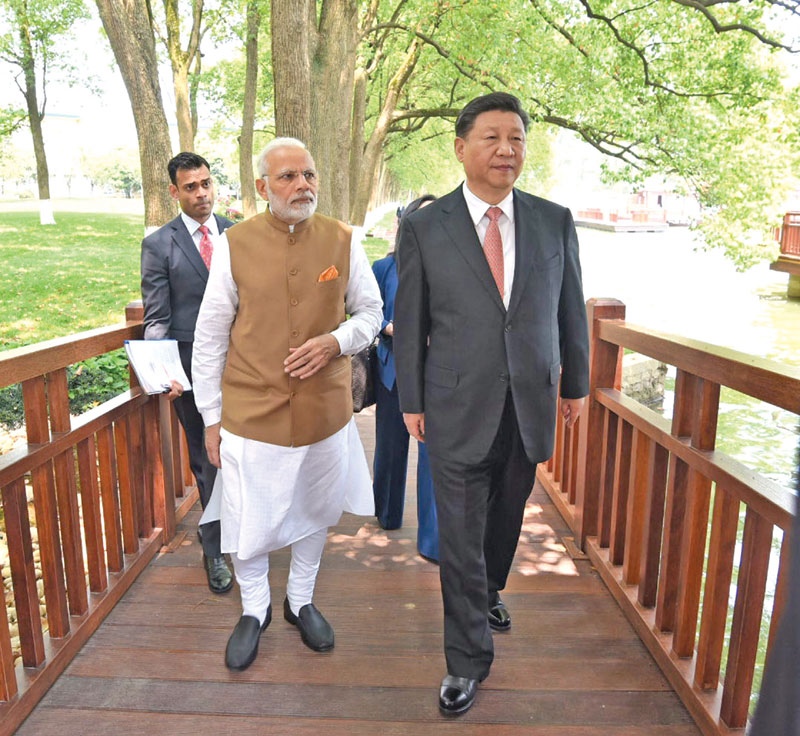How India deals with China will determine how the rest of the world perceives it
 Ajay Singh
Ajay Singh
On the night of June 15-16 nearly 600 Indian and Chinese soldiers were caught in skirmishes at an altitude of 13,500 feet along the steep embankment of the Galwan river. The six-hour clash in pitch darkness was a medieval encounter with the use of clubs, iron rods, stones and bare hands that saw 20 Indians—most of whom fell to their death in the icy waters of the Galwan river below—and 45 Chinese dead (35 as per US Intelligence accounts). No shots were fired, but it was the first loss of lives along the Line of Actual Control (LAC) since 1975 and marked a complete turnaround in Indo-China relations.
Chinese troops, who had set up a camp near Patrol Point 14 in the Galwan Valley, were supposed to have moved back as per disengagement talks between the two sides. They did move back initially but returned two days later in greater strength. (Apparently replaced by troops from other front-line units). Col Santosh Babu, commanding officer (CO) of 16 BIHAR went there along with his party to ask them to withdraw, only to be attacked and grievously wounded. Seeing the attack on their CO, Indian soldiers attacked the Chinese camp, and that’s when the major blood-letting took place. Reinforcements from adjoining units arrived on both sides and the clash went on well past midnight. That clash and the deaths that occurred broke the uneasy peace—perhaps forever—that has existed along the LAC for more than 45 years.
The clash was the result of a series of incursions made by the Chinese in Depsang, Eastern Ladakh, along the Pangong Tso lake and even far off Naku La in Sikkim. The incursions had begun in March—taking advantage of the pre-occupation in battling the spread of Covid-19—and were obviously part of a plan. There were 660 ground and 108 air violations of the LAC in 2019—much higher than the previous years, and apparently preparations had been underway for a long time. China’s Western Military Region, which looks after the area opposite India’s 14 Corps, had already built up troops and heavy equipment on their side, before establishing themselves in areas of Depsang, Hot Spring, Galwan Valley and the Northern bank of the Pangong Tso lake. In the Depsang area they moved in five kilometers beyond their own claim line in the critical area of tri junction which is just 30 kilometres from Daulat Beg Oldi. Even in the Galwan Valley, they have moved beyond their own claim line of 1960. This marks a change to the status quo that has existed since 1962.
The first clash—using fisticuffs and stones—took place on May 5 at a beach near Pangong Tso, which was followed by another on May 11. On May 10 another spat erupted at Mugathy Valley in far-off Sikkim (possibly to keep Indians engaged all along the border). The criticality arose in the Galwan Valley (incidentally one of the flashpoints of the 1962 War as well) when the Chinese objected to the construction of a branch road leading to our post there; and moved in to the areas of Hot Springs, Patrol Point 14 and Patrol Point 15 with around 800 men each. The talks between the two sides to defuse the situation had veered towards a disengagement by both sides, when the Galwan Valley clash and loss of lives took place on June 15.
The gloves were completely off now.

Salami Slicing in the Mountains
The Chinese actions were obviously planned much in advance. As per some estimates, the rapid development of infrastructure on the Indian side, including the Darbuk-Shyok-Daulat Beg Oldie road, a 255-kilometre-long lateral moving along the LAC, seemed to have irked them. In fact, the occupation of the Galwan Heights enables domination and observation of the road and thus it acquires even greater significance. The decision to change the status of Ladakh into an independent Union Territory and misguided statements emanating from senior politicians of taking back Aksai Chin and other parts of Ladakh also reportedly set alarm bells ringing. These were possibly viewed as a future threat to their massive investments in Aksai Chin.
In the 20 rounds of border talks, the Chinese have never given maps of where their perception of the LAC lies. Most of what China wants lies in the Ladakh region, which provides depth to Aksai Chin through which the crucial Xinjiang-Tibet road traverses—one of their most important arteries. The road was also one of the major causes of the 1962 war. Even though they also claim Arunachal Pradesh (which they call Southern Ladakh), much of their actions there and in Sikkim are part of a plan to tie down Indian forces. Their main area of interest lies in Ladakh and their occupation of small, but critical areas along the LAC like Depsang, Galwan and Pangang Tso would help provide depth to Aksai Chin, and also strengthen their bargaining position for any future settlement.
This kind of salami slicing can be conducted by China all along the LAC. They do not want a full-scale war. With the existing force levels and deployment, the Indian Army will be able to fight them to a stalemate, which will be construed as an Indian victory, both locally and in the eyes of the world. Their tactic seems to be to occupy a series of positions, engage in talks and then agree to disengage unimportant positions while continuing to hold on to vital areas. In the latest round of talks too, though they have agreed to disengage, they have refused to withdraw from Galwan, and now claim the entire Galwan Valley as theirs.
You must be logged in to view this content.

